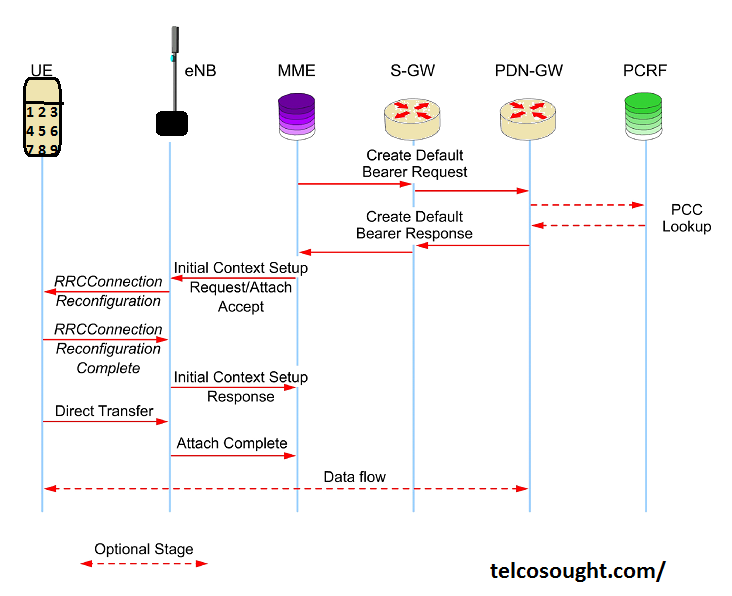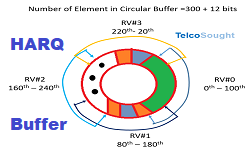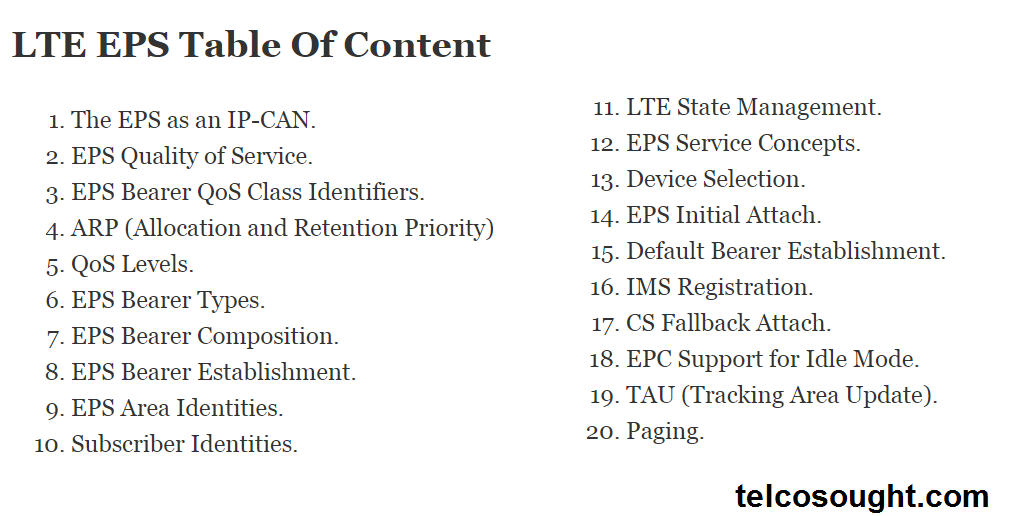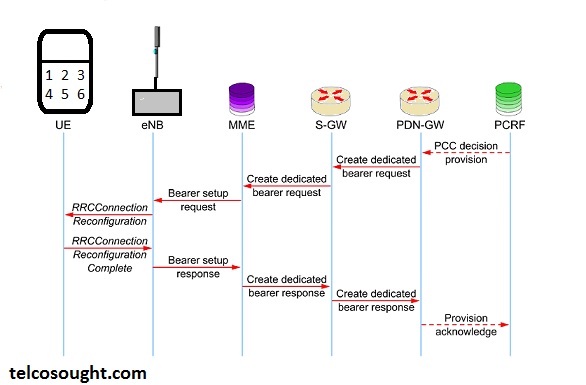EPS Initial Attach and Default Bearer
In this Lte 4g eps article, we learn on EPS Initial Attach The goal of the UE when attaching a device is to verify the subscriber’s name and address to the network in order for services to be accessed. And EPS Default Bearer Establishment A default bearer needs to be created and the MME chooses the SGW which will manage it, as well as a PDN- GW that can support that APN.
Table of Content :-
EPS Initial Attach
The goal of the UE when attaching a device is to verify the subscriber’s name and address to the network in order for services to be access. When attaching, this UE is assigned an EPS default bearer that allows for continuous connectivity to an PDN. The UE could be provided with details of a local PCSCF that will allow it to sign up to the IMS.
A simplified overview of the attach process in the event that it’s an initial attachment with information stored from a prior context for an UE that uses their H-PLMN (Home Public Land Mobile Network) and accessing through the Home E-UTRAN is illustrated and the steps to be completed are explained below.
After a cell that is suitable is selected, after which the UE utilizes random Access procedure to ask for an RRC connection to the selected eNB. After that, the Attach Request message can be sent. If the UE had previously been associated with PLMN (Public Land Mobile Network) the message could include the GUTI previously assigned to it in the message. Alternatively, an Attach Request email will contain the subscriber’s IMSI as well as other information.
After receiving the Attach Request, the eNB or derives from the identity of the MME previously used from the GUTI provided or chooses one of the MMEs from the available pool that it forwards to the recipient.
The MME communicates with the HSS that is indicated through the subscriber’s IMSI and then receives the appropriate components from the “quintuplet,”, which allows the EPS-AKA procedure to begin.
In this case, the MME could be asked to verify the identity and condition of the UE through the EIR via an ME Identity Check procedure. This can be done through the over-the-air interface.
After the AKA processes have been successfully completed, after which the MME sends an update location message to HSS and then receives the Inscription Subscriber Data message back containing the service profile of the user. The Insert Subscriber Data Ack received by MME MME follows by an update location Ack received from HSS. This UE is now linked with the EPC.
EPS Default Bearer Establishment

A default bearer needs to be created and the MME chooses the SGW which will manage it, as well as an PDN- GW that can support that APN. The MME issue a CreateDefault bearer request to the chosen S-GW, which assigns a GTP TEID the bearer of the EPS and forwards the request to the designated PDN-GW. If the network is using dynamic PCC, the PDN GW will search the PCRF that is assigned to for the UE in search of bearer-specific parameters. If not, the bearer is created with local QoS settings that are stored within the PDN-GW.
An Create Default bearer response message is transmitted between the PDN-GW and the S-GW. It includes pertinent parameters like the bearer’s IP address and perhaps the DNS address or IP address name of the local IMS P-CSCF. The S-GW then creates the bearer in the manner it is specified and then sends an Create default Bearer Response information to the MME. The specifics that define the S1-U services will be defined at this phase.
The MME transmits the Initial Context Setup request/attachment Message, that contains the parameters assigned for the bearer context of EPS for the electronic NNB. The eNB then transmits the RRC Connection Reconfiguration message to the UE to inform it of the bearer’s details as well as the updated radio interface parameter. The UE sends back the RRC Connection Reconfiguration Full message to confirm whether the radio’s bearer that was initially set up to transmit the attachment message is now configured to accommodate those new settings. The eNB transmits an attach Complete message back to the MME.
The UE sends an Direct Transfer message to the eNB and confirms the information of the bearer’s EPS. Then the eNB transmits an Attach Complete message to the MME to verify it has completed both Attach as well as the Default processes of the EPS Bearer were successfully completed. The data for uplink and downlink will be transmitted if necessary.




